New to This Edition

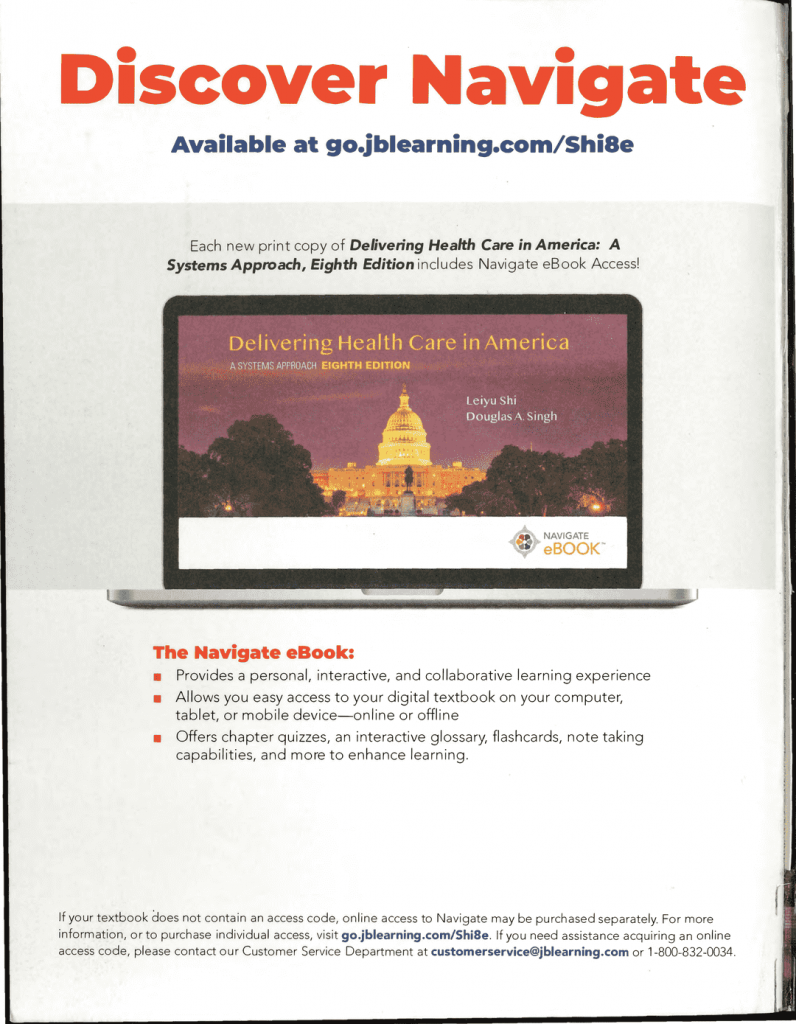



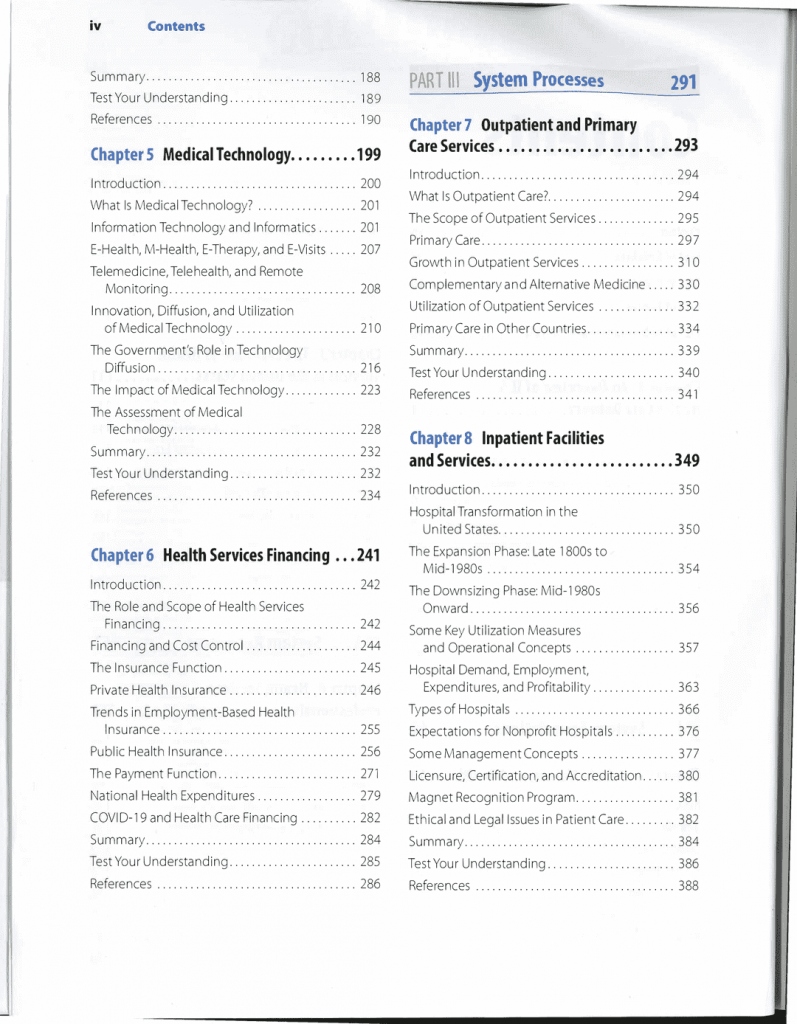
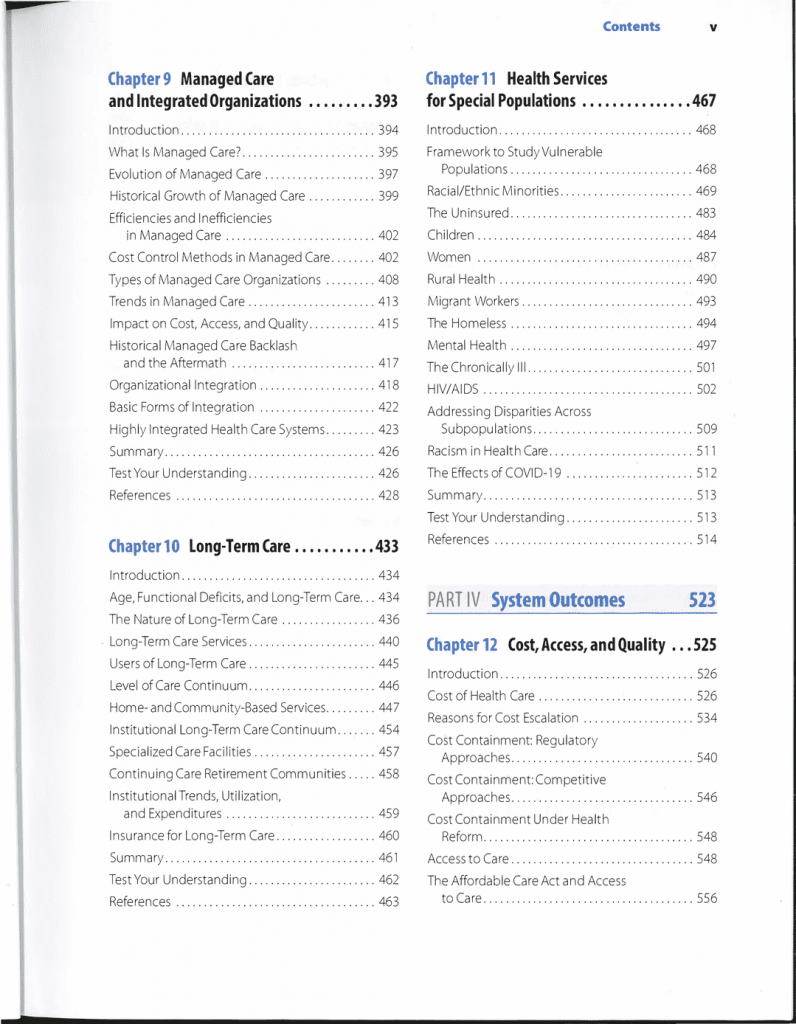
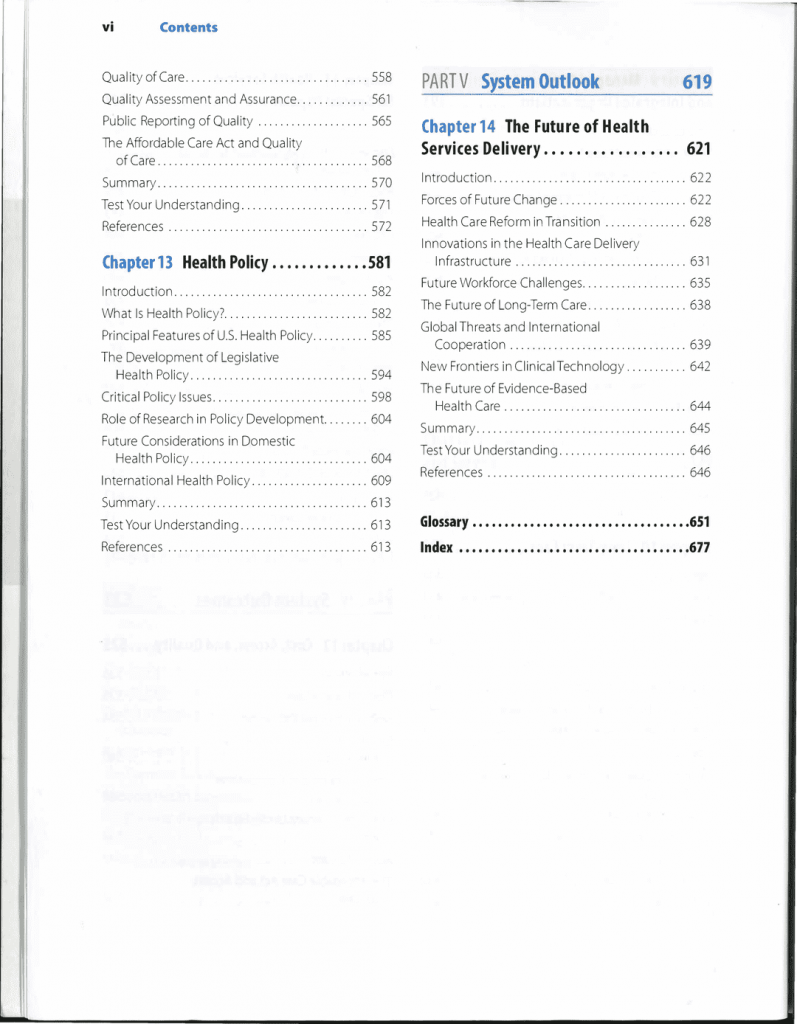

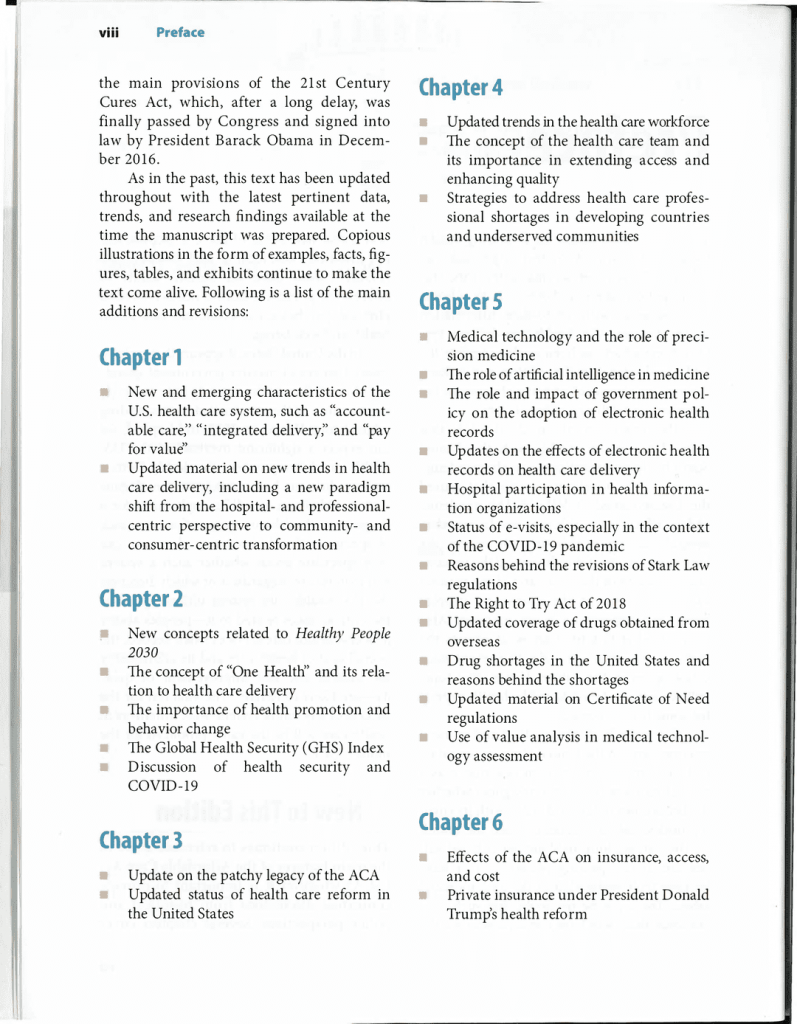
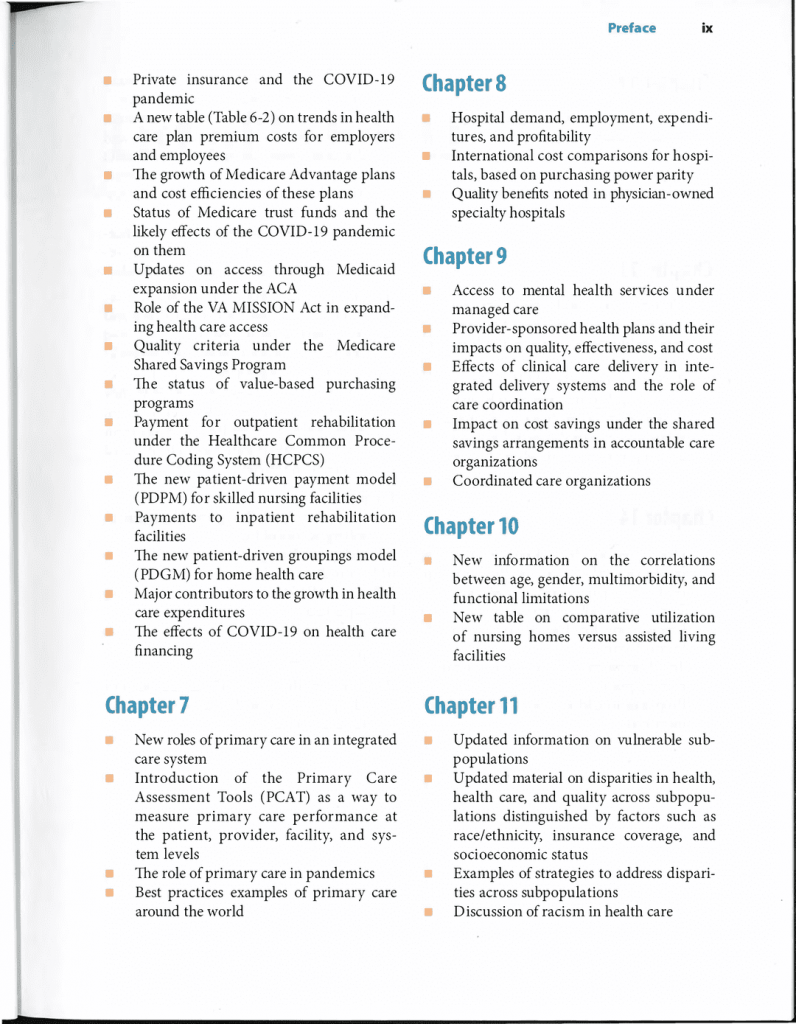
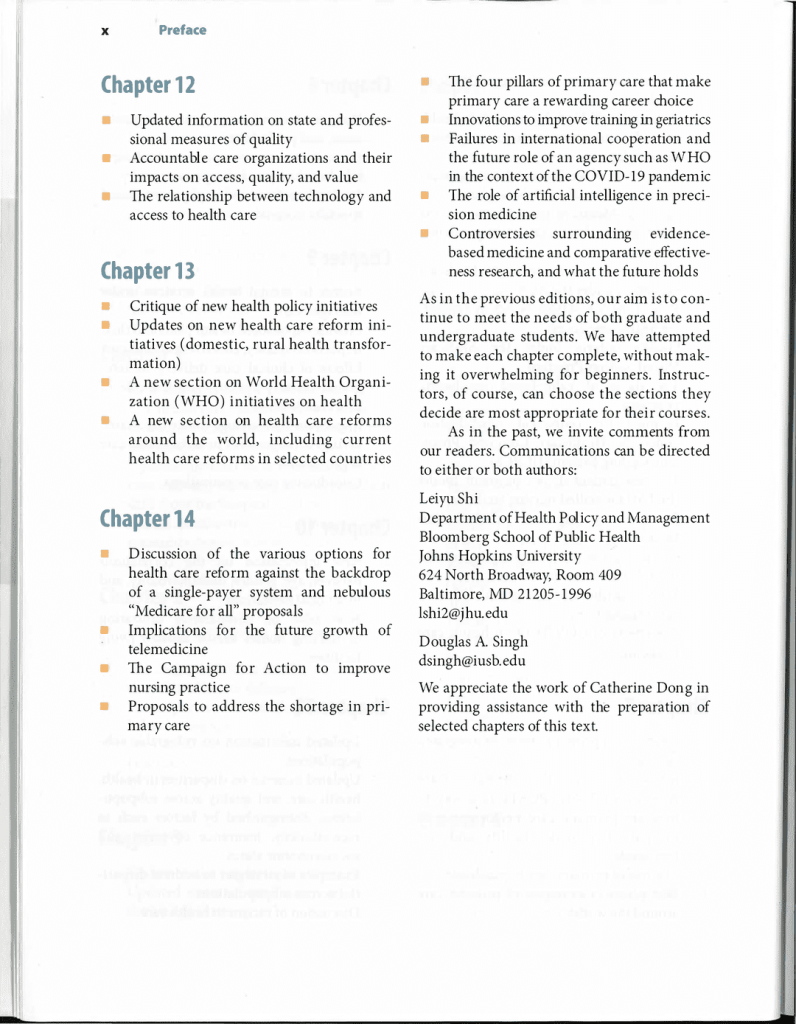
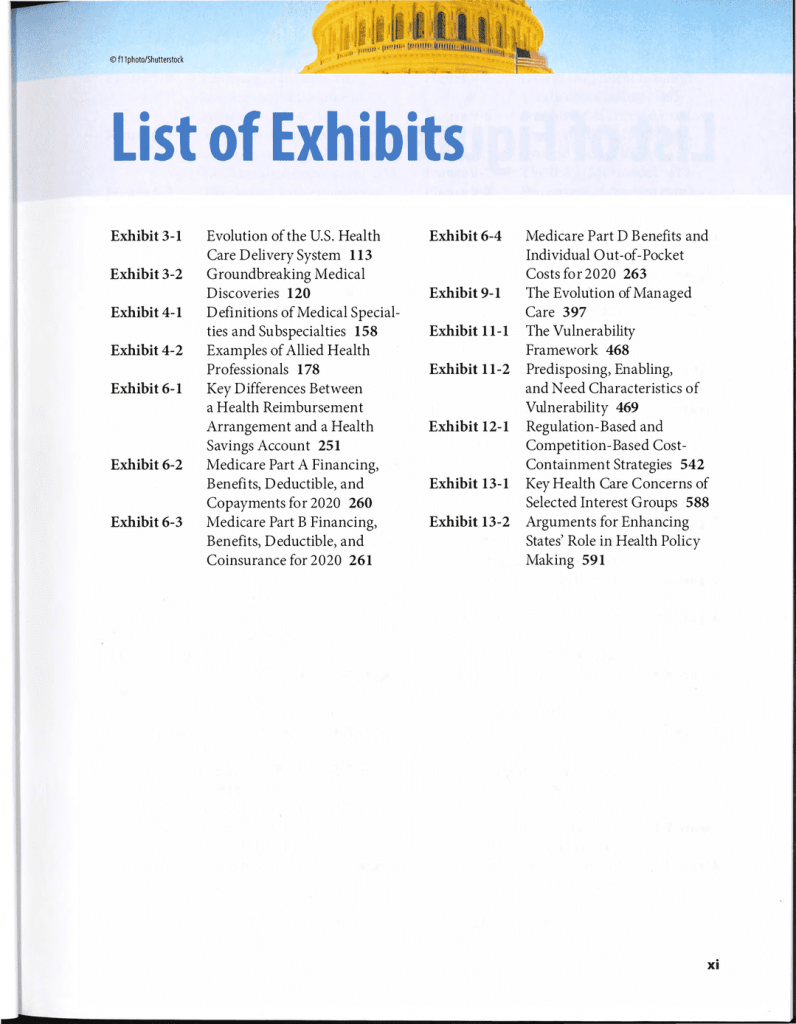
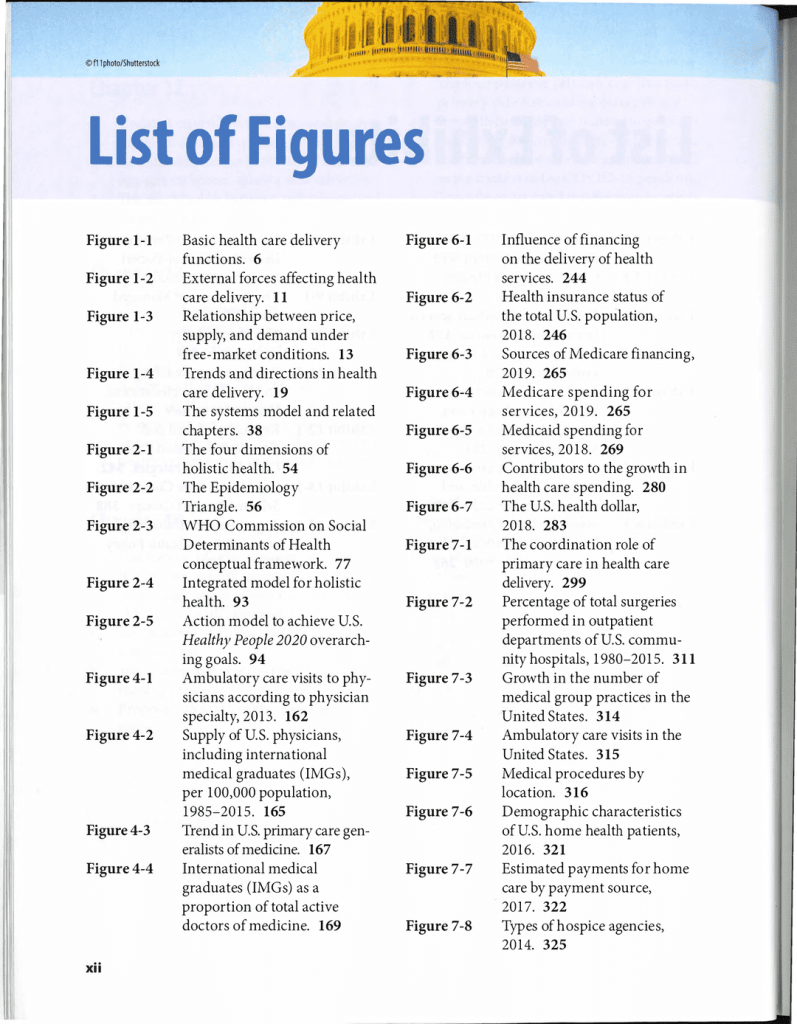
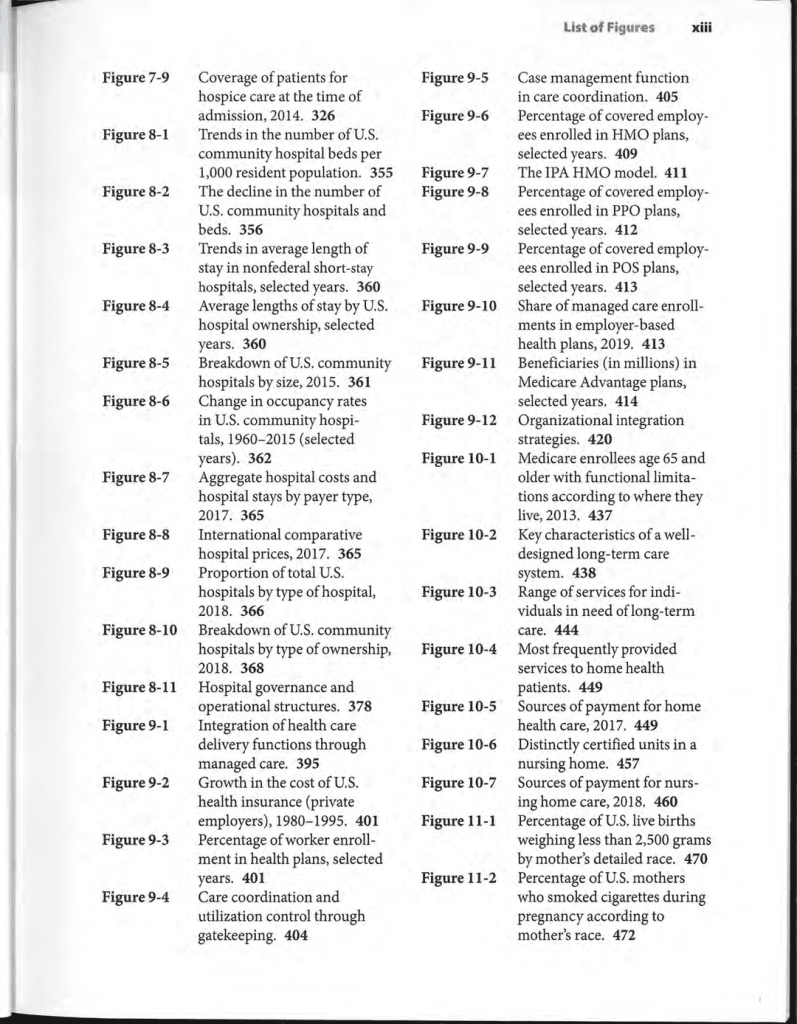
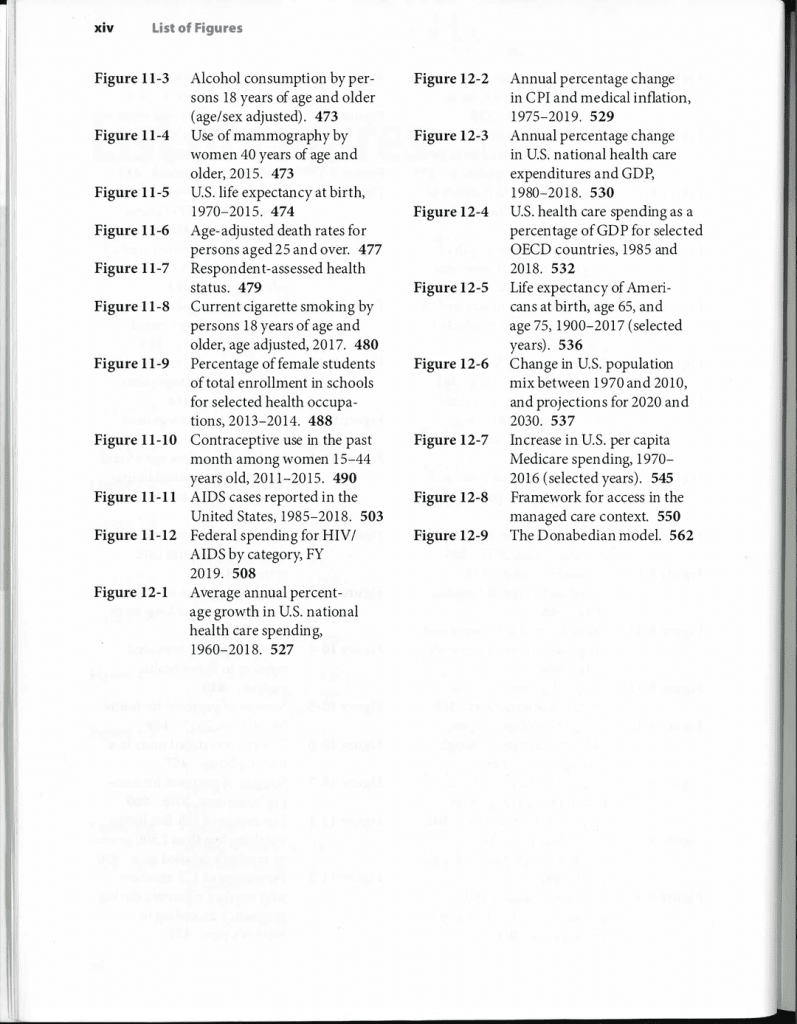
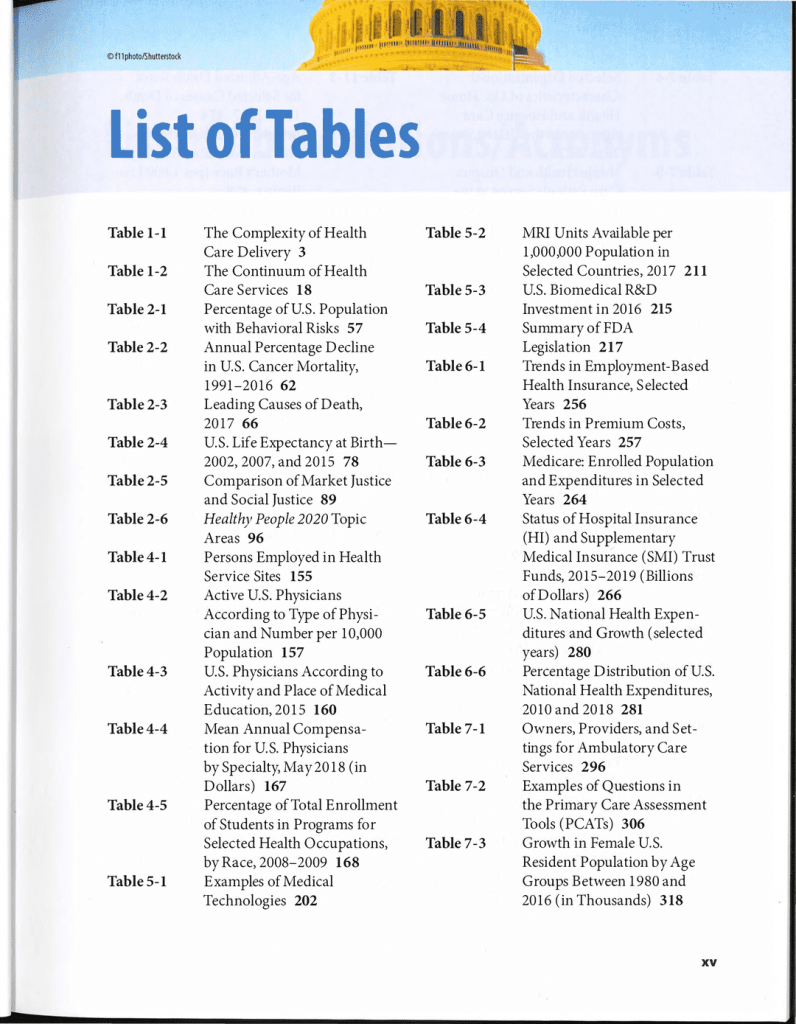
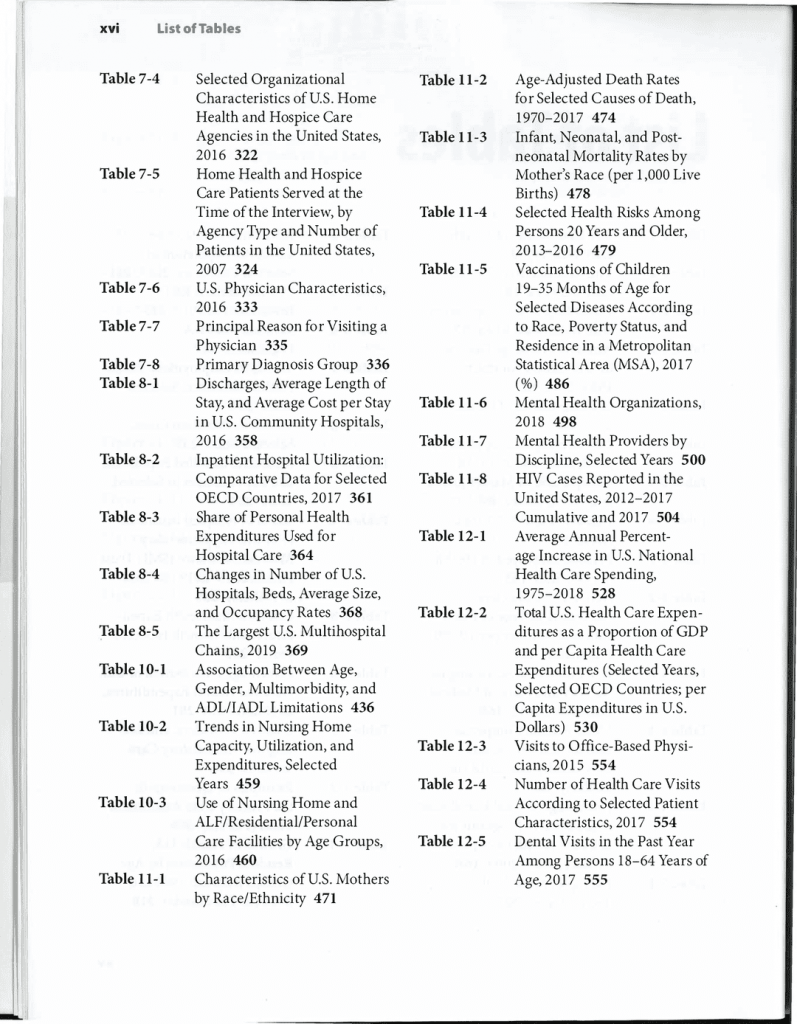

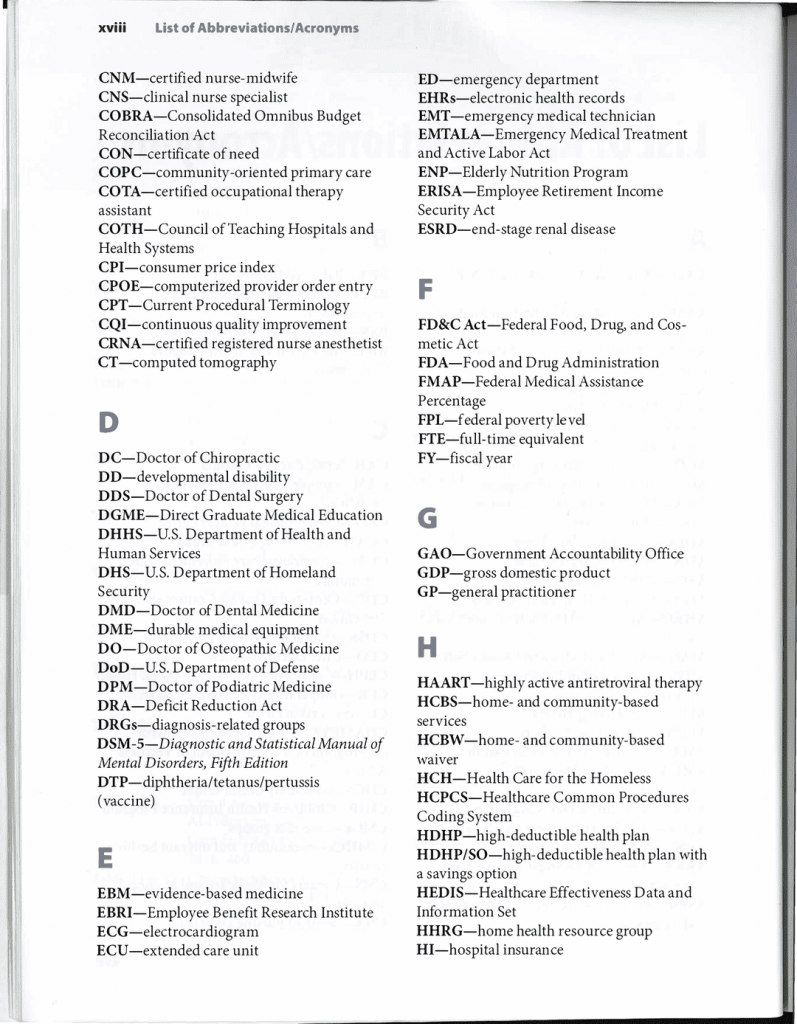
Chapter 1
- New and emerging characteristics of the U.S. health care system, such as “accountable care;’ ”integrated delivery;’ and “pay for value”
- Updated material on new trends in health care delivery, including a new paradigm shift from the hospital- and professionalcentric perspective to community- and consumer-centric transformation
Chapter 2
- New concepts related to Healthy People 2030
- The concept of “One Health” and its relation to health care delivery
- The importance of health promotion and behavior change
- The Global Health Security (GHS) Index
- Discussion of health security and COVID-19
Chapter 3
- Update on the patchy legacy of the ACA
- Updated status of health care reform in
- the United States
- Private insurance and the COVID-19
- pandemic
- A new table (Table 6-2) on trends in health
- care plan premium costs for employers
- and employees
- The growth of Medicare Advantage plans
- and cost efficiencies of these plans
- Status of Medicare trust funds and the
- likely effects of the COVID-19 pandemic
- on them
- Updates on access through Medicaid
- expansion under the ACA
- Role of the VA MISSION Act in expanding health care access
- Quality criteria under the Medicare
- Shared Savings Program
- The status of value-based purchasing
- programs
- Payment for outpatient rehabilitation
- under the Healthcare Common Procedure Coding System (HCPCS)
- The new patient-driven payment model
- (PDPM) for skilled nursing facilities
- Payments to inpatient rehabilitation
- facilities
- The new patient-driven groupings model
- (PDGM) for home health care
- Major contributors to the growth in health
- care expenditures
- The effects of COVID-19 on health care
- Financing
Chapter 4
- Updated trends in the health care workforce
- The concept of the health care team and
- its importance in extending access and
- enhancing quality
- Strategies to address health care prof essional shortages in developing countries
- and underserved communities
Chapter 5
- Medical technology and the role of precision medicine
- The role of artificial intelligence in medicine
- The role and impact of government p olicy on the adoption of electronic health
- records
- Updates on the effects of electronic health
- records on health care delivery
- Hospital participation in health information organizations
- Status of e-visits, especially in the context
- of the COVID-19 pandemic
- Reasons behind the revisions of Stark Law
- regulations
- The Right to Try Act of 2018
- Updated coverage of drugs obtained from
- overseas
- Drug shortages in the United States and
- reasons behind the shortages
- Updated material on Certificate of Need
- Regulations
- Use of value analysis in medical technology assessment
Chapter 6
- Effects of the ACA on insurance, access,
- and cost
- Private insurance under President Donald
- Trump’s health reform
Chapter 8
- Hospital demand, employment, expenditures, and profitability
- International cost comparisons for hospitals, based on purchasing power parity
- Quality benefits noted in physician-owned
- specialty hospitals
Chapter 7
- New roles of primary care in an integrated
- care system
- Introduction of the Primary Care
- Assessment Tools (PCAT) as a way to
- measure primary care performance at
- the patient, provider, facility, and system levels
- The role of primary care in pandemics
- Best practices examples of primary care
- around the world
Chapter 9
- Access to mental health services under
- managed care
- Provider-sponsored health plans and their
- impacts on quality, effectiveness, and cost
- Effects of clinical care delivery in integrated delivery systems and the role of
- care coordination
- Impact on cost savings under the shared
- savings arrangements in accountable care
- organizations
- Coordinated care organizations
Chapter 11
- Updated information on vulnerable subpopulations
- Updated material on disparities in health,
- health care, and quality across subpopulations distinguished by factors such as
- race/ ethnicity, insurance coverage, and
- socioeconomic status
- Examples of strategies to address disparities across subpopulations
- Discussion of racism in health care
- The four pillars of primary care that make
- primary care a rewarding career choice
- Innovations to improve training in geriatrics
- Failures in international cooperation and
- the future role of an agency such as WHO
- in the context of the COVID-19 pandemic
- The role of artificial intelligence in precision medicine
- Controversies surrounding evidencebased medicine and comparative effectiveness research, and what the future holds
- As in the previous editions, our aim is to continue to meet the needs of both graduate and
- undergraduate students. We have attempted
- to make each chapter complete, without making it overwhelming for beginners. Instructors, of course, can choose the sections they
- decide are most appropriate for their courses.
- As in the past, we invite comments from
- our readers. Communications can be directed
- to either or both authors:
- Leiyu Shi
- Department of Health Policy and Management
- Bloomberg School of Public Health
- Johns Hopkins University
- 624 North Broadway, Room 409
- Baltimore, MD 21205-1996
- [email protected]
- Douglas A. Singh
- [email protected]
- We appreciate the work of Catherine Dong in
- providing assistance with the preparation of
- selected chapters of this text.
Chapter 10
- New information on the correlations
- between age, gender, multimorbidity, and
- functional limitations
- New table on comparative utilization
- of nursing homes versus assisted living
- facilities
Chapter 12
- Updated information on state and prof essional measures of quality
- Accountable care organizations and their
- impacts on access, quality, and value
- The relationship betwe
Chapter 13
- Critique of new health policy initiatives
- Updates on new health care reform initiatives (domestic, rural health transformation)
- A new section on World Health Organization (WHO) initiatives on health
- A new section on health care reforms
- around the world, including ·current
- health care reforms in selected countries
Chapter 14
- Discussion of the various options for
- health care reform against the backdrop
- of a single-payer system and nebulous
- ((Medicare for all” proposals
- Implications for the future growth of
- telemedicine
- The Campaign for Action to improve
- nursing practice
- Proposals to address the shortage in primary care
